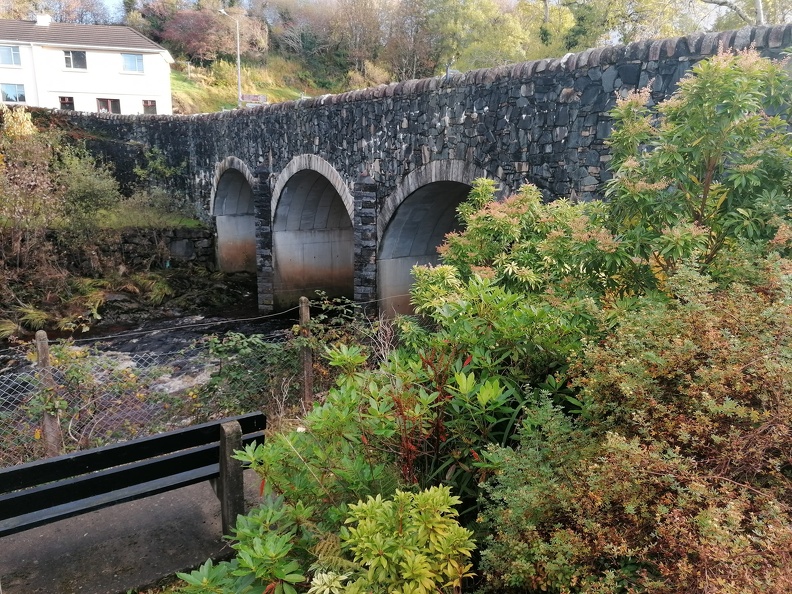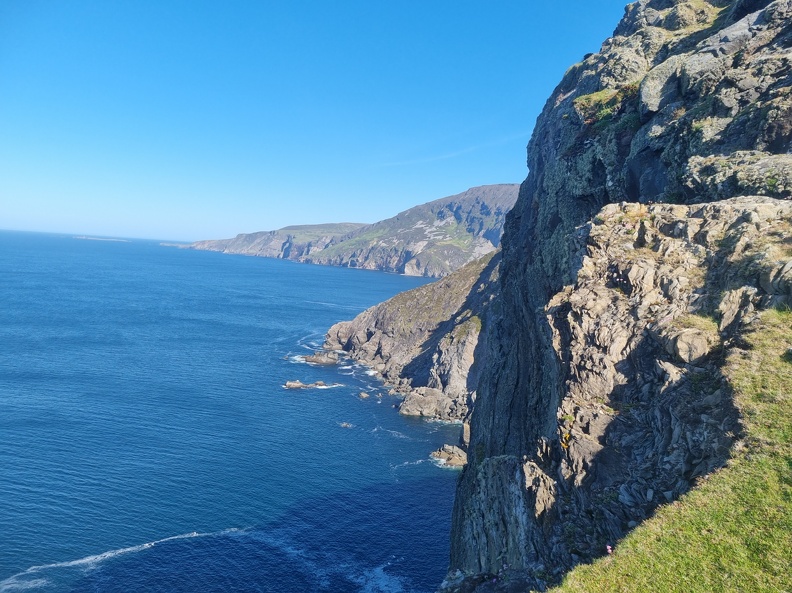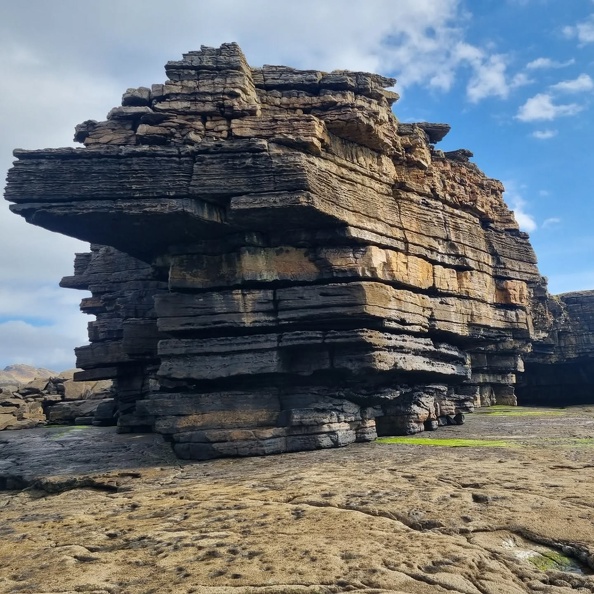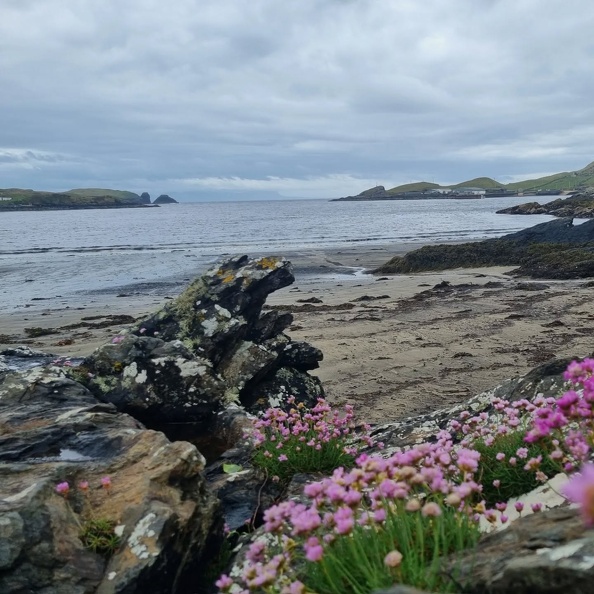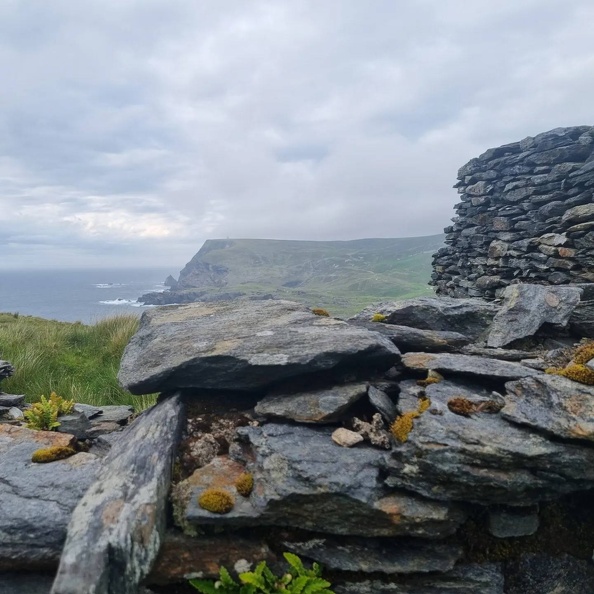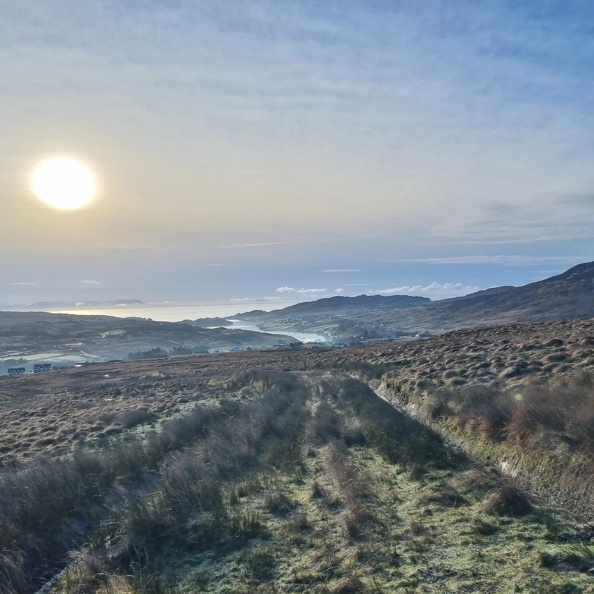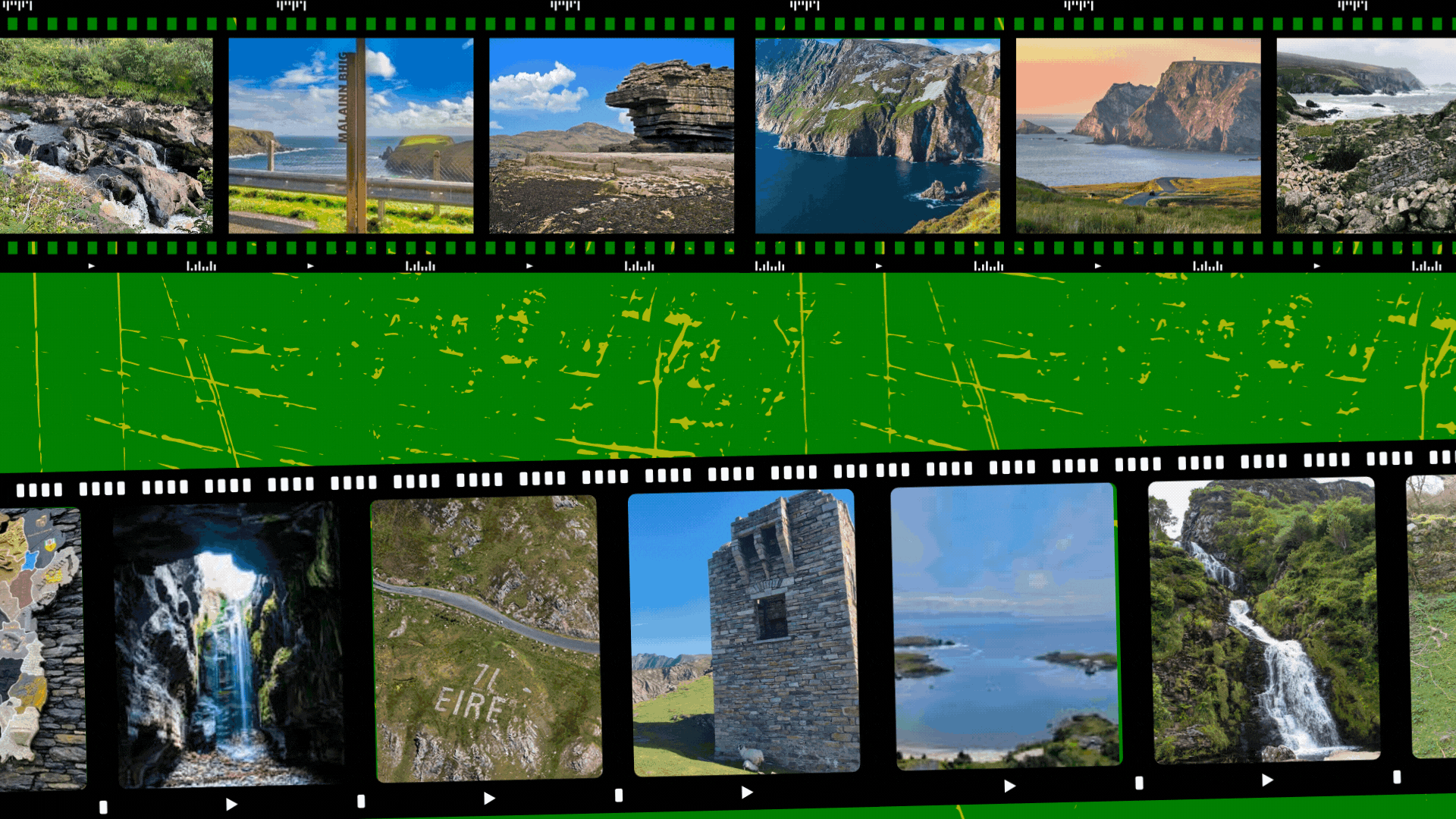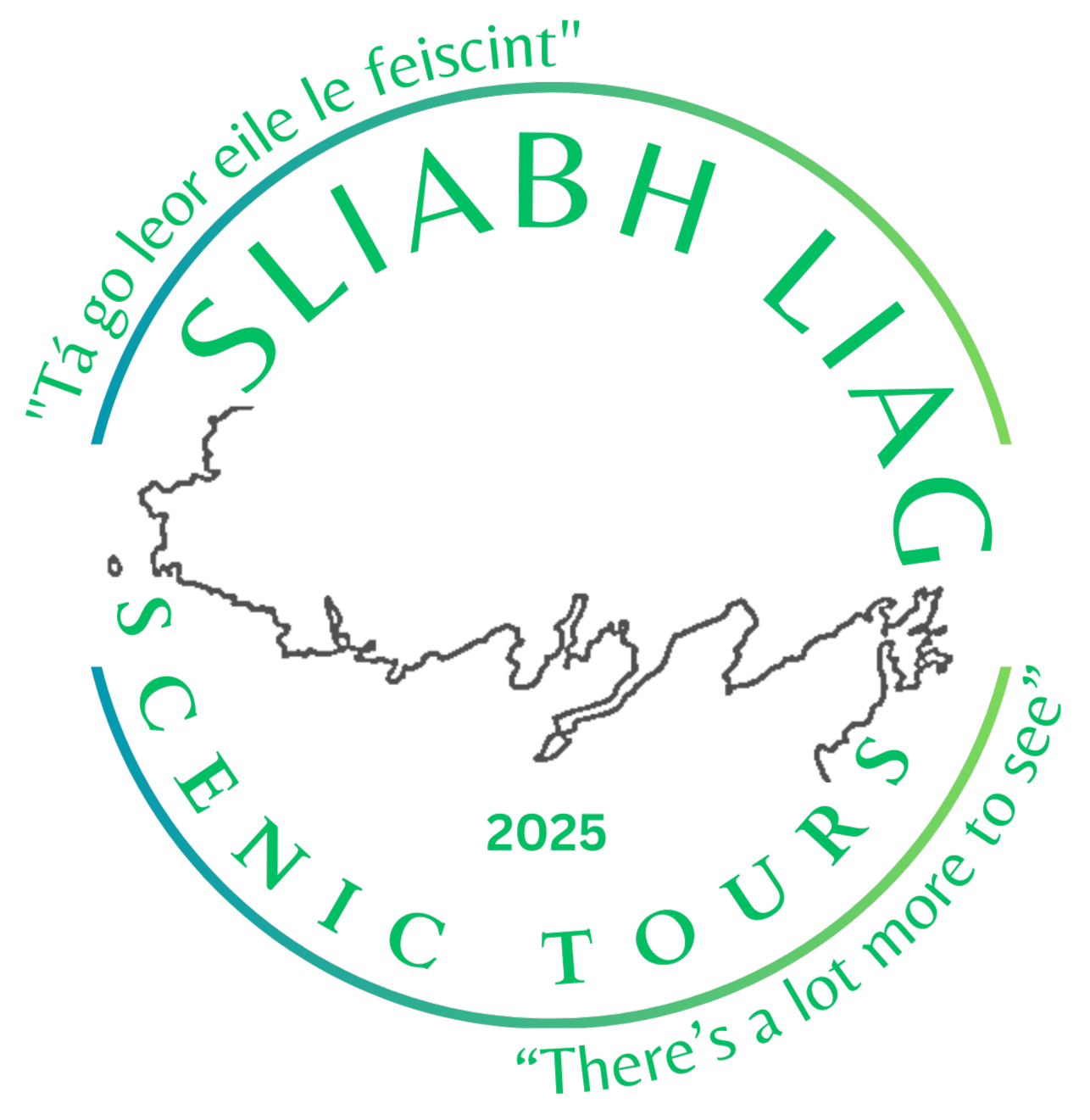🏞 A Brief History of Carrick & Surroundings
This is just a glimpse into the deep and vibrant history of Carrick and its neighbouring villages. There's so much more waiting to be explored—and even more to experience firsthand on one of our guided tours.
📍 Carrick – An Charraig ("The Rock")
Carrick is a charming village nestled between Glencolmcille, Teelin, and Kilcar in the heart of southwest Donegal. Its Irish name, An Charraig, translates to “The Rock,” and it stands as a testament to the area’s resilience and cultural heritage.
Historically, Carrick was shaped by families like the Musgraves, prominent landowners known for their charitable works and contributions to the Belfast engineering industry. They built Carrick Lodge and played a central role in local life. The village also lies near ancient monastic routes that connect to early Christian settlements in Teelin.
Glencolmcille Hotel
Nestled on a generous 1.8‑acre site the Glencolmcille Hotel once served as a welcoming landmark to visitors of the Slieve League peninsula. Dating back to around 1869, it became a favoured pit‑stop after travellers reached Carrick by rail and horse‑drawn carriage. The hotel operated into the early 21st century and was burned down in 1912.
Carrick Vocational School / Colaiste na Carraige
Established in 1950 at the Red House on the Teelin Road, Carrick Vocational School began as a modest institution with just 12 boys and a single woodwork teacher who also served as principal. By 1958, the school expanded with a new two-room building near Carrick Bridge and the addition of a Home Economics teacher, transitioning to a co-educational model with 59 students. Over the decades, the school experienced significant growth. In the late 1980s, enrollment peaked at 333 students, prompting the construction of a new school building in 1990, which remains in use today with just over 200 students enrolled.
👥 Local People Who Made History
Mary Cunningham
A Carrick native, Mary was working in a restaurant in New Hampshire when she met Augustus Saint-Gaudens, a renowned sculptor. In 1905, he was commissioned by President Theodore Roosevelt to redesign U.S. gold coins—work that would become iconic in American numismatics.
Lieutenant-Colonel Maureen Gara
Maureen began school in Meenaveen before attending Carrick National School. She served during WWII, celebrated VE Day in the Netherlands, and was later awarded the Royal Red Cross 1st Class for exceptional service in military nursing. In 1999, a ward in a UK military hospital was named in her honour.
Father James McDyer
Born near Glenties in 1911, Fr. McDyer became a driving force for rural development. In the 1960s, he helped create local co-operatives for food and knitting production, then turned his focus to tourism by founding the West Donegal Folk Village. He later formed the Glencolmcille Development Association and played a vital role in community-led growth before retiring near Carrick.
⚓ Teelin – A Port of Pilgrims
One of Ireland’s oldest Christian ports, Teelin has been a key location since the 5th century. It is believed Coptic monks set sail from Rinn na Cille here—an event still commemorated with a local monument.
The pier area features ruins of an early Christian church and serves as a reminder of Teelin’s spiritual heritage.
Teelin College - Coláiste Aoidh Mhic Bhrince
Coláiste Aoidh Mhic Bhricne in Teelin is one of Ireland’s oldest Irish-language summer colleges, with a proud history dating back to the early 1950s. Founded to promote the Irish language and culture, the college has welcomed generations of students from across the country to immerse themselves in Gaeilge through classes, music, dance, and community life.
Located in the heart of the Gaeltacht, beneath the majestic Slieve League cliffs, the college plays a vital role in preserving and celebrating the Irish language in a natural, living environment.
Teelin Coastguard Station
Constructed in 1871, replacing an even earlier establishment from the early 1820s. Perched beside Teelin Pier, the station is built in roughcast stone with sandstone dressings.
During the Irish War of Independence, on 12 June 1921, approximately 50 IRA volunteers attacked the station, unleashing sustained sniper fire. The station was later burned around 1923, ending its service during the Civil War.
🏔 Sliabh Liag – Cliffs of Legacy
Towering 601 metres above the Atlantic, Sliabh Liag (Slieve League) is Europe’s highest accessible sea cliffs—nearly three times the height of the Cliffs of Moher. Beyond their breathtaking beauty, the cliffs hold ancient secrets.
This site was once a place of pilgrimage, with remnants of beehive huts and the chapel of Aed Mac Bric still visible. It’s also part of the International Appalachian Trail, and nearby stands the Carrigan Head Signal Tower, built in 1805 beside the dramatic EIRE 71 stone marker.
🧶 Kilcar – Weaving Heritage & Faith
Kilcar (Cill Chartha) is steeped in history and known for its strong ties to traditional textile production. Since the 1800s, families in the area have spun and dyed wool, producing the tweeds that remain famous today.
The nearby townland of Churchtown is home to the ruins of a church dating back to 640 A.D , believed to be linked to St. Cartha.
Kilcar Woollen Industry
Kilcar has a long-standing tradition of woollen craft, renowned for its exquisite handwoven tweeds and knitwear. For generations, local artisans have combined time-honored techniques with natural Donegal wool to create distinctive textiles prized for their quality and unique patterns.
The Kilcar woollen industry is not only a vital part of the region’s economy but also a cherished cultural heritage, preserving skills passed down through families.
The Battle of Derrylaughan
The Battle of Derrylaughan was a significant conflict fought in County Tyrone during the late 16th or early 17th century, amid ongoing tensions between Gaelic Irish chieftains and English forces. Taking place near the shores of Lough Neagh, it was part of the wider struggle for control of Ulster during the Nine Years' War (1594–1603), which saw Irish leaders like Hugh O’Neill resist English expansion.
Though details are scarce, the battle is remembered locally as a fierce encounter that reflected the broader resistance of the native Irish against encroaching rule. The landscape around Derrylaughan still bears traces of its history, offering visitors a chance to connect with a pivotal moment in the story of Ulster.
The Spanish Churches – Kilcar & Glencolmcille
Local tradition in Kilcar and Glencolmcille speaks of the Spanish Churches that tdate back to the time of the Spanish Armada in the late 16th century. According to legend, Spanish sailors shipwrecked off the Donegal coast were sheltered by local communities, and some remained, leaving behind traces of their influence.
Ruins in the area—referred to as the "Spanish Church"—are thought to be connected to these stories, blending fact and folklore. While there's limited historical evidence, the tale endures as a fascinating link between Donegal’s rugged coastline and a dramatic chapter of European history.
Visitors can explore these evocative ruins and enjoy the rich heritage and stunning scenery that define this corner of the Wild Atlantic Way.
⛪ Glencolmcille – Glen of the Saints
With over 1,500 years of history, Glencolmcille is a deeply spiritual and cultural heartland. Named after St. Columba (Colm Cille), the area is rich in early Christian relics, ancient monuments, and folklore.
Father James McDyer's vision and energy revitalised the community in the 20th century, building both industry and tourism that continues to shape the region today.
St Colm Cille
St Colm Cille (521–597 AD) is one of Ireland’s three patron saints. Born in Gartan he studied widely before founding a monastery in Glencolmcille during the 6th century. His enduring influence is still visible in the ruins of ancient churches across the glen. Each year on his feast day (9 June), locals and visitors embark on the Turas Cholmcille, a 5 km pilgrimage through 15 “stations” marked by ancient stone cairns, crosses, or slabs—some dating to 3000 BC. Pilgrims circle cairns and perform prayers at each station, connecting pre-Christian and medieval spiritual traditions.
Cloghanmore Court Tomb
Nestled in the scenic Glencolmcille valley, Cloghanmore Court Tomb is one of the most impressive Neolithic monuments in County Donegal. Dating back over 5,000 years, this megalithic tomb features a distinctive central court and multiple burial chambers, aligned with the surrounding landscape.
Its large stone structure and unique design offer a fascinating glimpse into ancient Irish burial practices and beliefs. A visit to Cloghanmore connects you to the deep prehistoric roots of the area, set amid the wild beauty of southwest Donegal.
🚢 Killybegs– Ireland's Premier Fishing Port
Nestled along the Wild Atlantic Way, Killybegs is Ireland’s largest fishing port and a vibrant coastal town in southwest Donegal. Known for its bustling harbour, scenic views, and seafood heritage, Killybegs is a hub of maritime activity. Visitors can enjoy fresh local seafood, explore traditional craft shops, and watch impressive trawlers at work. With a warm community and rich seafaring history, Killybegs offers an authentic Donegal experience on the edge of the Atlantic.
Killybegs Carpets – Craftsmanship Woven into History
Killybegs has long been renowned for its tradition of hand-tufted and woven carpets, with a legacy that began in the early 20th century. Famous for supplying luxurious carpets to stately homes, embassies, cruise ships, and even Buckingham Palace, Killybegs Carpets became a symbol of Irish craftsmanship and design excellence.
WWII Plane Crash – Killybegs
In March 1944, a Royal Air Force Sunderland aircraft tragically crashed in the hills near Fintra. The aircraft, used for Atlantic patrol and anti-submarine operations, The plane came down on Crownarad killing the twelve crew members on board. Despite Ireland's neutral stance during World War II, such incidents were not uncommon along the Donegal coastline due to its strategic location near the North Atlantic.
🗺 Discover More on a Local Tour
These stories—and many more—come alive on our walking and driving tours of the area. Whether you're drawn by heritage, landscape, or the people, there's always more to uncover in Carrick and its neighbouring villages.
